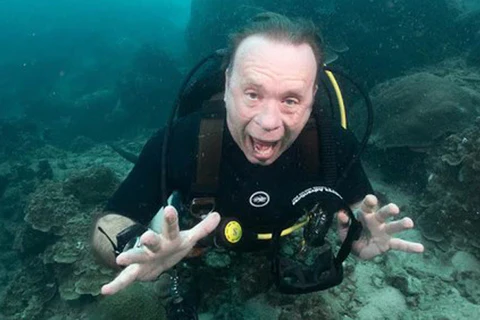Mastering Your Personal Space: Turning the Mask into a Window, Not a Prison
“I’m not sure I can get used to the feeling of something on my face,” or “The thought of being surrounded by water makes me feel a bit smothered.” These are very real and honest statements we often hear at Amadive. The fear of confined spaces (claustrophobia) in diving isn’t about depth or sharks; it’s about your personal space.
In this in-depth article in our series on Overcoming Scuba Diving Fears, we will explore the roots of this feeling and break down, step-by-step, how the PADI training program is brilliantly designed to help you gradually master your space, turning that feeling of confinement into one of complete freedom.

Understanding the Source of the Feeling
This sensation typically stems from two main factors:
- The Mask: It removes your peripheral vision and creates a “boxed-in” feeling around your eyes and nose.
- The Water Environment: Being completely surrounded by water is an unnatural experience that can initially create a sense of pressure and disorientation.
The good news is that both of these factors are completely manageable through training and gradual familiarization.
How the PADI System Systematically Builds Your Confidence
The PADI Open Water course doesn’t just teach you to dive; it teaches you to be comfortable underwater. Here is how we methodically address the fear of confinement.

Step 1: Starting in the Pool – The Ultimate Safe Space
Everything begins in the shallow, clear water of a swimming pool. You can stand up at any time. This predictable environment removes the “unknown” factor, allowing you to focus entirely on getting familiar with the equipment.
Step 2: The “Mask Clearing” Skill – The Key to Confidence
This is perhaps the single most important skill for combating the feeling of being trapped.
- Why it works: The biggest fear with a mask is “What if water gets inside?”. By intentionally letting a small amount of water in and then easily forcing it out just by exhaling through your nose, you prove to your brain: “I am in control of this situation.” You learn that water in your mask is a minor inconvenience, not an emergency.
- Amadive’s Experience: We see a visible change on a student’s face the moment they master this skill. The tension disappears, replaced by a proud smile. They realize they are more capable than they thought.
Step 3: The “Mask Removal and Replacement” Skill
This is the next level, which helps you completely conquer the fear.
- Why it works: By taking the mask off completely, opening your eyes for a moment, and then putting it back on and clearing it, you completely break the psychological dependency on the mask. You learn that even without it for a moment, you are okay, you can still breathe, and you can solve the problem.
- Expert Tip: Most people are surprised to find that pool water doesn’t sting their eyes as much as they imagined. Experiencing this in a controlled environment removes the fear of the “worst-case scenario.”
Additional Tips from Our Experience
- Get the Right Mask: An ill-fitting mask will constantly leak, creating an annoyance that feeds anxiety. Take the time to get professionally fitted. A good mask should “stick” to your face even without the strap on.
- Focus on Your Breath: Before you descend, take a minute at the surface, close your eyes, and just focus on the rhythm of your inhales and exhales through the regulator. This simple meditative technique works wonders for calming the nervous system.
- Communicate with Your Instructor: Tell us about your anxieties. If you need more time to practice a skill, we will give you that time. There is no pressure.
Frequently Asked Questions (FAQ)
- What if I truly panic underwater?
- You won’t. Because we practice in a pool first, and your instructor is trained to recognize the early signs of stress and intervene before it ever becomes panic. Furthermore, you are always near the surface and can ascend safely at any time.
- Are some masks better for claustrophobia?
- Yes. Try masks with a wide field of view and a clear silicone skirt instead of a black one. This lets in more light and can reduce the feeling of “tunnel vision.”
Conclusion: Finding Freedom Through Control
Overcoming the fear of confinement isn’t about ignoring it; it’s about building the skills to prove that you are always in control. Every skill you master in the pool is a brick in your wall of confidence. Once you trust yourself and your equipment, the mask is no longer a barrier—it’s your personal window to an extraordinary new world.
Important Disclaimer: Your safety and comfort are our top priorities. Overcoming fear requires patient, professional guidance. Never attempt to practice these skills on your own.
